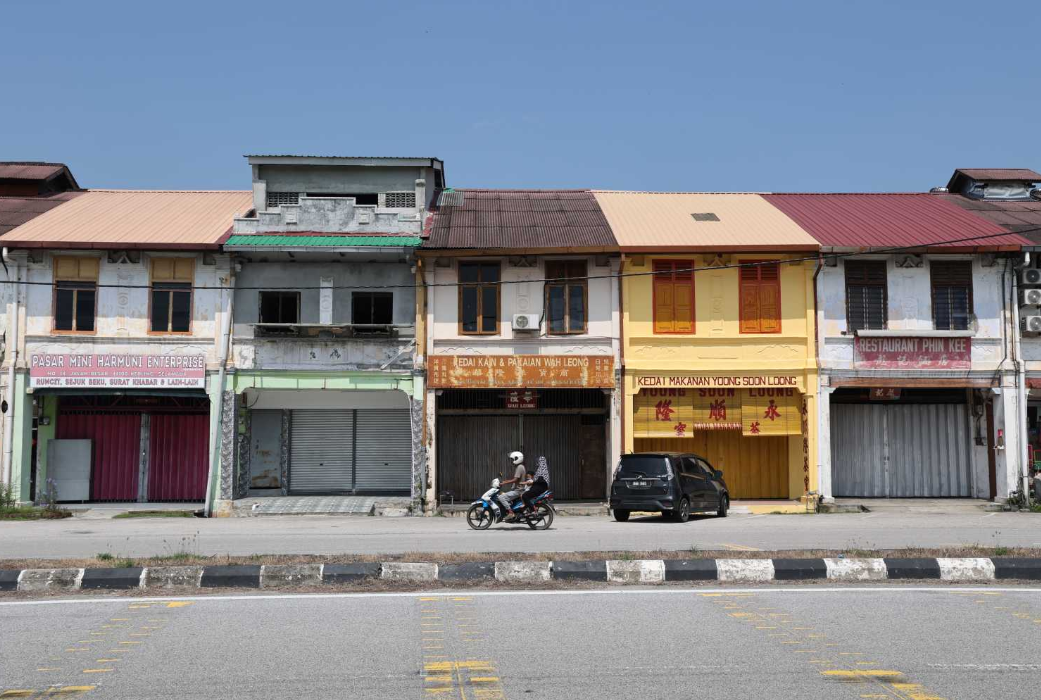INTERACTIVE: Rapid ageing and Malaysia's 'ghost towns'

Source: The Star
PETALING JAYA: Starting today, rural and suburban areas all over the country are going to come alive again with traffic jams, joyous young children and packed bazaars as Malaysians return home for Hari Raya Aidilfitri.
The noise, colour and crowds are a welcome break for these towns which have been greying over the past decades, as the proportion of elderly residents grows while younger ones leave in search of better jobs.
During non-festival days or when the school holidays are over, these areas slowly turn back into ghost towns.
"We have towns where all or almost all are senior citizens, the place is not growing anymore.
"The biggest factor is that there are no economic drivers or job opportunities to maintain the youth," said Malaysian Research Institute on Ageing (MyAgeing) senior research officer Chai Sen Tyng.
"It is so bad in some areas that they would only look forward to the weekend visitors when families and children come to visit.
"On the weekdays in rural areas, there is practically nothing there," he said.
The return of families to their hometowns brings a "small economic boom" for the local businesses.
According to the 2020 MyCensus by the Statistics Department (DOSM), the number of sub-districts with an aged society, where 14% of the population has reached age 65 and above, have more than doubled within 10 years.
In 2020, a total of 150 sub-districts, consisting of mukim, bandar and pekan, had 14% or more of its population aged 65 years and above.
Out of the 150 sub-districts, 41 have reached a "super-aged" society, where 20% or more of its population are aged 65 years and above.
There were 57 aged and 15 super-aged sub-districts in 2010.
DOSM identifies mukim, bandar and pekan according to the National Land Code (Act 828).
There are 1,730 mukim, bandar and pekan in the 13 states in Peninsular Malaysia, excluding Sabah, Sarawak and the Federal Territory of Labuan.
There are 1,065 mukim, 260 bandar and 405 pekan.
The United Nations has defined three categories of ageing: an ageing society, an aged society and a super-aged society.
An ageing society has 7% of its population aged 65 years and above, an aged society has 14% and a super-aged has 20%.
Migration of residents from these areas to cities and other areas are among the factors contributing to this situation.
According to DOSM, Hulu Selangor's Pekan Kerling is one such place.
It's population may have grown by 287% but its elderly now make up 40% of its population of 360 people.
A decade ago, the elderly population made up only 8.6% of its population.
Meanwhile, the elderly in Mukim Kerling make up 25.2% of its population, while Muar's Bandar Bukit Kepong has an elderly population of 23.9%.
"It is likely that these are now old townships and there is very low demand," said Chai.
"There are very few economic activities, and you cannot attract young people as there are no jobs.
"It is so bad in some areas that they would only look forward to the weekend visitors when families and children come to visit.
"On the weekdays in rural areas, there is practically nothing there," he added.
He said district health offices also have difficulty reaching people in these areas.
"How do you ensure support and care reach these people?
"Because the elderly are sick or immobile, the district health offices may not have the manpower to visit deep or rural areas," said Chai.
He added that abandoned housing and farms are another impact of an aged society.
He said in other countries, local governments have an integrated system where health, education and other important areas are under their purview.
"We don't have that sort of devolution and empowerment. When we don't have that, we don't see the whole thing as an ecosystem," he said.
Chai said in some areas like Taiping, there are facilities like the Komuter and Electric Train Services (ETS) that make it easier for children or families to visit or travel.
The government, he said, has to increase economic activities in suburban areas, such as boosting the creative economy and encouraging local industry players to set up factories and offer job opportunities.
"When you have economic drivers, populations move and change.
"When a new factory is set up, younger population will come in. It's not hard for the government to change the fate of a community.
"The old formula is to build a university, then the price of property goes up and cafés and restaurants grow with the presence of young people," he added.
The country needs more sustainable community-based services, as well as a lot more facilities and services for the elderly, said Chai.
"We have very good coverage, we have over a thousand public clinics (and) over 300 government hospitals, but we lack affordable community services because we do not have dedicated funding," he said.
He said countries like Singapore provides good healthcare to its people as its residents pay to medicate and they have long-term care insurance.
"We lack community programmes and services. Now it is still driven by the private sector because the government does not have enough funds to pilot its own," he said.
The government, added Chai, must make a commitment to prioritise the needs of the elderly to ensure that the future of the country's aged population can be sustained.
